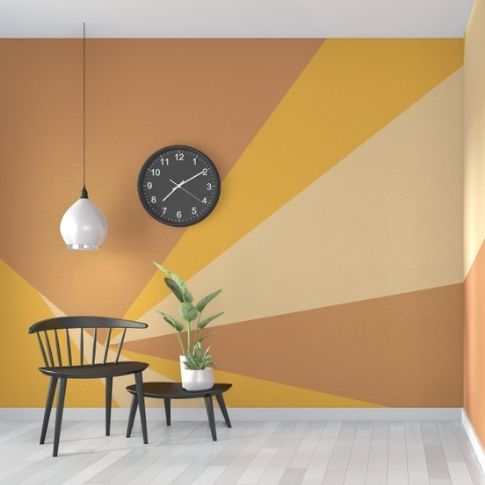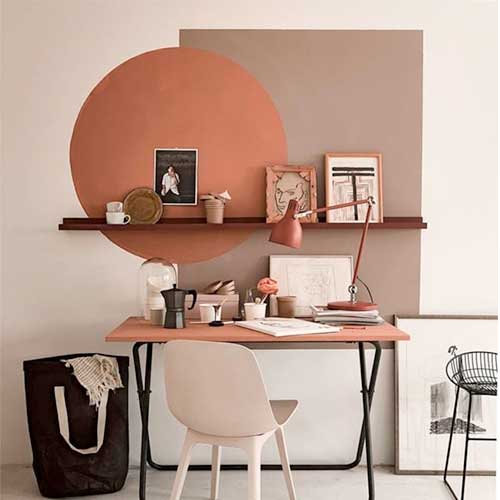Are you looking to breathe new life into your living space? Wall decoration with paint is not just a cost-effective solution but also a creative outlet! I remember the first time I decided to transform my dull walls into a vibrant canvas. The excitement was palpable, and the results were astonishing. In this comprehensive guide, we’ll explore various techniques, styles, and tips to help you master the art of wall decoration with paint. Let’s get started!
Why Choose Paint for Wall Decoration?
Painting your walls offers numerous advantages. Here are a few compelling reasons:
- Versatility: Paint can easily be changed, allowing for a fresh look without significant renovations.
- Cost-Effective: Compared to wallpaper or paneling, paint is generally less expensive.
- Variety of Options: With a vast array of colors, finishes, and techniques, the possibilities are endless.
- DIY Friendly: Painting is a project you can easily tackle on your own, making it a great DIY option.
Choosing the Right Colors for Your Space
Choosing the right color is crucial in creating the desired atmosphere. Here are some tips based on my personal experience:

Understanding Color Psychology
Colors can significantly influence mood and perception. Here are some common associations:
- Blue: Calming and serene, great for bedrooms.
- Yellow: Energetic and cheerful; perfect for kitchens.
- Red: Bold and passionate; ideal for dining rooms.
- Green: Refreshing and restorative; works well in living areas.

Choosing a Color Palette
Once you have a color in mind, create a palette. Use online tools like Adobe Color or Coolors to mix and match shades. Here’s how:

- Choose a dominant color.
- Select complementary or analogous colors.
- Consider the room’s lighting.
Wall Painting Techniques to Try

Now that you’ve chosen your colors, it’s time to explore painting techniques. These can add depth and character to your walls.
1. Solid Color Paint

This is the most straightforward option. Choose a single color for your walls, and you’ll achieve a clean and modern look.
Pros and Cons
| Pros | Cons |
|---|---|
| Easy to apply | May feel flat or boring without accents |
| Quick refresh | Limited texture |

2. Accent Walls
Creating an accent wall involves painting one wall a different color to highlight it. This is a technique I’ve used in almost every room of my home!

Pros and Cons
| Pros | Cons |
|---|---|
| Easy focal point | Can overpower smaller rooms |
| Adds interest | Requires careful color selection |
3. Stripes and Patterns
Painting stripes or patterns is a fun way to add playful elements to your decor. I experimented with horizontal stripes in my living room, and it became an instant conversation starter!
Application Tips
- Use painter’s tape to ensure clean lines.
- Mix different finishes for added texture.
Preparing Your Walls for Painting
Preparation is key to a successful painting job. Here’s what you need to do:
1. Clean the Surface
Make sure walls are free of dust, grease, or previous paint residues. A simple washing with soap and water usually suffices.
2. Fill Holes and Cracks
Use spackle or a filler to repair any imperfections for a smooth finish.
3. Prime the Walls
Applying primer is especially important if you’re making a drastic color change or painting over dark shades.
Gathering Your Tools
Before you start painting, gather all necessary tools. Here’s a comprehensive list based on my past experiences:
- High-quality paintbrushes and rollers
- Painter’s tape
- Drop cloths to protect the floor
- Paint trays
- Stir sticks and buckets
- Step ladder
Step-by-Step Painting Process
Now that you’re ready, here’s a simple step-by-step guide for wall painting:
Step 1: Prep the Room
Move furniture away and cover with drop cloths.
Step 2: Tape Edges
Use painter’s tape along edges, trim, and any fixtures to get clean lines.
Step 3: Start Painting
Begin with the edges using a paintbrush, then move on to larger areas using a roller.
Step 4: Apply Additional Coats
Depending on color and finish, you may need 2-3 coats. Ensure each coat dries properly.
Step 5: Remove Tape
Peel off the tape while the paint is still slightly wet for the best results.
Decorating with Paint Beyond the Walls
Consider incorporating painted furniture or decorative elements to tie your room together. Here are some ideas:
- Paint furniture in matching or complementary colors.
- Create custom stencils for decorative accents on furniture.
- Use paint to enhance frames or mirrors.
Innovative Ideas for Wall Decoration with Paint
Feeling adventurous? Here are some innovative ideas:
1. Geometric Shapes
Using painter’s tape, create geometric shapes for a modern, contemporary look.
2. Ombre Effect
Blend colors from light to dark for a stunning ombre wall.
3. Chalkboard Paint
Transform a section of your wall into a chalkboard for a fun, interactive surface.
Maintenance and Care for Painted Walls
Once your walls are painted, regular maintenance will keep them looking fresh. Here are some pointers:
- Wipe down with a damp cloth to remove dust.
- Use mild soap for stains.
- Repaint as needed to freshen up colors.
Frequently Asked Questions (FAQs)
What type of paint is best for interior walls?
Generally, matte, eggshell, or satin finishes are great for interior walls. These finishes hide imperfections and are easy to clean.
How long does it take for paint to dry?
Drying times vary, but most paints dry to the touch in about 1-2 hours. Full curing can take up to a week.
Can I paint over wallpaper?
While it’s possible, it’s not always recommended. Removing wallpaper is generally the best option for a smooth finish.
How can I ensure a smooth finish?
Prepare properly, use high-quality tools, and apply the paint evenly. Multiple thin coats are preferable to one thick layer.
What color should I paint my small room to make it look larger?
Light colors such as pastels or off-whites create an illusion of space, while dark colors might make a room feel cozier but smaller.
Conclusion
Decorating your walls with paint is a rewarding task that can transform any space into something magical. Armed with the knowledge and techniques from this article, you can confidently embark on your painting journey. Remember, the only limit is your creativity. Happy painting!